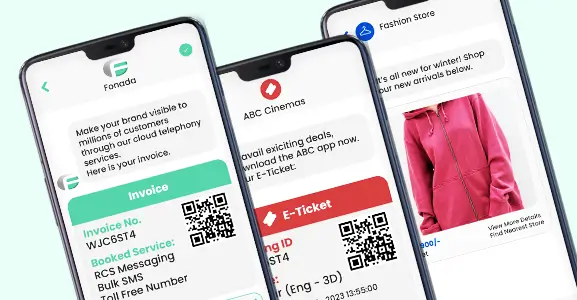When establishing long-lasting relationships, brands know the significance and importance of customer experience (CX). Sixty-five percent of businesses want to increase their technology spending in 2024, and they plan to do so by an average of 24 percent, with CX being the main factor of this trend.
The term “CX” may be used for virtually any customer-facing technology, and developing changes involves streamlining tools, interfaces, and platforms and decreasing friction around delivering customers what they want. It will continue incorporating technologies such as websites, social media, and chatbots in 2024. It will progressively consider developing channels such as the metaverse & augmented reality (AR).
There’s a good reason why brands and businesses put customer experience trends at the top of their to-do lists for the next year.
What Does Customer Experience Trends Mean?
Every business believes that the quality of its product or service represents its competitive advantage. Customers no longer choose a business based on that. Today, everything is about providing the customer with the best possible experience.
Customer experience is how your customer believes your organization treats them. These perceptions influence their activities and create memories and feelings that drive their dedication.
If they like you, they’ll keep doing business with you and suggest you to others. Improving the customer experience has often boosted customer retention, satisfaction, and revenue.
Customer experience trend in the digital era is a key brand differentiator that competes strongly with pricing and product. So, we took the initiative to explore and discover the future of customer experience in 2024. How would the expectations of customers change this year? What are the most significant CX trends?
Why Is It Important To Improve The Customer Experience?
The pandemic has pushed people to buy more online than ever before. Now, they want high-quality service at every digital interaction. By 2040, nearly all transactions (95%) will be made online. We expected this, as customers’ preferences are trending in this way.
Positive customer experiences are vital to the success of a business because satisfied consumers convert to loyal customers who contribute to revenue growth. Focusing completely on the client experience may require extra effort, but the effort is worthwhile.
Boost Sales Conversions
Customers who had a good experience in the past spent 140% more than those who had a negative one. Providing a positive brand experience increases consumer lifetime value (CLTV).
Improve Customer Loyalty
A good experience is an asset for all types of businesses. The cost of gaining a new customer is seven times higher than keeping an existing one. Therefore, having a positive customer experience ensures that clients will continue to work with you.
Enhanced Customer Retention
Providing prompt service increases client satisfaction and encourages their continuous support. When CX is improved, the number of issues requiring customer support goes down dramatically. Satisfied customers engage with a brand forever.
The Top 10 Customer Experience Trends
Brands are under greater pressure than ever to deliver customers rewarding, smooth, and unique digital experiences. Despite the economic downturn, more than 65 percent of businesses plan to boost CX investment by an average of 24 percent in 2024.
From immersive encounters to innovation, here are the top ten Customer Experience trends for 2024.
1. Analytics For Proactive Customer Experience
Customer engagement analytics are essential for increasing customer experiences throughout a company’s business, selling, and service channels. Customers anticipate proactive customer service from businesses. They want the company to reach out and inform customers know about new offers and deals.
In the past, businesses could get away with replying they’d get back to customers within 24 hours. Now, however, customers expect extremely relevant and personalized responses from brands, and they expect them immediately.
Instead of reaching out themselves, customers anticipate updates from brands. Using the proper technological stack is crucial for organizations that want to provide real-time updated information to their customers.
According to research, businesses anticipate their customers’ demands in advance, or 50% will switch brands.
Consumer insights from data can benefit businesses in studying customer behavior, segmenting consumers, establishing objectives, and more. Using data, organizations can enhance the entire customer experience due to the availability of more accurate information and a greater understanding of consumer expectations. Additionally, data can aid in building a unified experience across multiple channels.
2. Automated Chatbots Will Be More Popular
Automation has existed for a long time now. Customers and businesses are slowly adopting customer support automation. AI-powered chatbots improve 24/7 customer support and reduce operational costs for organizations.
Statistics predict that 80% of organizations will have chatbots by 2022. The latest trend is differentiating between deployment and actual usage.
In 2024, more brands will use automated chat for customer assistance. Brands that invest in chatbots are more likely to have a favorable impact on their customers’ perceptions of their brand’s self-service options.
Automating the support process will enhance service metrics. It will also make customers happy by delivering prompt resolutions and significantly boosting customer support’s productivity. Investing in chatbots can assist companies in improving their self-service options, giving a more favorable impression of the business’s customer experience.
3. Personalisation As A Unique Factor
In 2024, this will be one of the most important customer experience trends. Customers expect personalization in everything from product suggestions to customer service responses. The only way for businesses to offer highly customized recommendations to their clients would be to first identify them as specific users across all mobile apps and websites.
Simplifying a customer’s experience boosts the chances of a purchase. Your information about your clients is the first step in making their experiences more unique. Create detailed personas for your customers, and then use them to guide the content you offer with each one.
With the help of AI chatbots, businesses can now offer customers the personalized messaging they expect. AI-powered chatbots can interpret queries, evaluate emotions, and respond positively.
With the help of advanced marketing automation tools, customization has emerged as the single most effective CX improvement a business can implement to boost revenue.
4. Initiatives To Enable And Enhance Self-Service
Excellent customer service does not necessarily indicate a satisfying engagement with a customer service rep. Customers adore the self-service model, in which they may resolve their problems. According to the survey results, most customers (67%) prefer to use the self-service choices rather than interact with the agents.
Reaching a human agent through the IVR system can be a tedious process. Instead, businesses can provide various options for customers to find solutions to their issues. Automating help through AI chatbots and rolling out frequently asked questions and useful articles are all great places to start with self-service enablement.
Enabling self-service will raise customer satisfaction, agent productivity, and customer insights. More companies will enable self-service after realizing its value. This leads us to the next major CX trend that is prevalent, and it will continue to evolve over the upcoming year.
5. Voice Navigation For Better Accessibility
As voice technology evolves, it impacts numerous fields, including eCommerce. As speech recognition and natural language processing improve, voice provides brands with many opportunities.
Voice-based search is expected to reach $40 billion by 2024. By 2024, it is also expected that 18% of consumer spending will be done through voice assistants.
Voice AI will be one of the most important channels for customer experience management. Due to its natural language processing capabilities, it can understand genuine conversations. Voice AI comprehends consumer questions, can grasp customer intent, and can react appropriately.
Voice technology can improve accessibility and audience reach on your website or app.
Voice commerce allows customers to easily ask for what they need using Alexa or mobile devices. The innovation has been praised as a more organic shopping experience than traditional keyboard-based web browsing.
6. Customers Anticipate Increased Data Transparency
Transparency improvement is one of the most significant trends in customer experience. Transparency in marketing, pricing, and product promotion, among many other areas, will assist you in establishing and maintaining your credibility with clients.
Sixty-six percent of consumers believe brand transparency constitutes one of the most favorable features.
When consumers perceive a brand to be honest about its offerings, they respond positively. Customers like transparent organizations. Additionally, a company’s marketing initiatives should exhibit integrity and transparency. Customers trust genuine, consistent messaging.
In the present world, dishonesty is frequently exposed, and it might harm a business’s capability to keep customers over time.
7. Omnichannel Will Become The Benchmark In The Future
Customers today expect a consistent and effortless experience across all the various channels and touchpoints they may use to communicate with a business. Thus, brands are contemplating multichannel customer communication experiences.
Consumers interacting with businesses across several digital channels desire consistent and highly customized interactions. For instance, they may initiate contact with a company on Facebook but then carry on the conversation via e-mail. They want a seamless experience on any platform.
51% of organizations use advanced contact center technology and leverage at least eight communication channels for customer experience alone.
From the initial point of contact to the last, a great omnichannel CX integrates online and offline communication channels to deliver a seamless and memorable experience.
Suppose your client base uses many channels (including but not limited to phone, email, online chat, social networks, and SMS) to communicate with your business. In that case, you need to provide them with a consistent and cohesive experience across all of them.
8. The Rise Of Subscriptions:
Offering subscription choices on items or services, and transforming one-time transactions into recurring ones, is an additional effective method of client retention and brand enhancement. Subscription models are sustainable, convenient for customers, and help organizations scale by knowing customers over time using subscription data.
There will be a rise in subscription-based business models’ popularity. Instead of attempting to gain a large user base through advertising, businesses will focus on retaining their current client base to achieve business growth. In reality, companies will lower their advertising budgets and try to improve customer happiness.
Brands would be well-advised to rethink interactive means of providing unique digital media experiences. A brick-and-mortar store can organize live internet events to reach a global audience.
Subscription models demand tremendous customer experience and feature investments to retain users. Since businesses will contact fewer users, they can provide greatly better and more individualized experiences.
It will increase the significance of zero-party and first-party data. Word-of-mouth marketing and viral expansion are two methods that companies will employ to influence client perception. Subscription-based app monetization methods will become the norm and cause ecosystem disruptions.
9. Quick And Convenient Payment Options
Customers want businesses to interact with them efficiently and seamlessly. This applies to payment as well. In other words, the simpler, the better! This requires firms to ensure that their clients have access to superior and more intelligent payment methods—all to give the best client experience possible.
The market for digital payments is anticipated to develop at an annual average rate of 18% during 2018 and 2024, with revenue of $ 87 billion by 2024.
Digital transactions are here to stay. With the majority of purchases still occurring online and more brick-and-mortar businesses offering digital payment options, it is crucial for brands to enhance the number of payment options available and include as many options as feasible.
10. AI Is Revolutionising The Digital Customer Experience
Artificial intelligence has enabled customer success teams to fulfill rising demands. AI is required to meet the requirements and expectations of clients for around-the-clock service. Firms must view AI in CX as a long-term asset to generate value. Customer engagement will improve as they spend more on AI. 57% of respondents from emerging economies acknowledged using AI in their businesses.
It assists firms with asset usage, boost safety and productivity, and reduces expenses. The Internet of Things (IoT) is being utilized extensively by businesses to improve their profitability and consumer experience.
38% of organizations use AI technology in some capacity. Using AI and machine learning to collect and analyze demographic, historical, and behavioral data, brands can better understand their customers.
AI, real-time decision-making, and predictive analysis can improve the consumer experience across all touchpoints and channels.
Why Should Customer Feedback Be Used To Enhance Customer Experience?
Every interaction with a customer, whether positive or negative, affects your company’s reputation and bottom line. Your consumers will likely tell their friends, coworkers, and relatives about their experiences with you. Ultimately, this strengthens your word-of-mouth marketing. As a result, you need to collect feedback from your clients to learn what they think of you, your business, and the items and services you offer. Customer feedback allows you to gather customer insights, implement significant changes, and enhance their experiences.
Improving customer experience trends requires customer feedback. Improving the customer experience depends on how well you gather and use customer input. Keep an eye on your clients’ journeys and insert a survey question at any point you think they could be distracted. Thus, you have effectively collected customer feedback.
How you use responses or consumer data is now the defining factor in the survey campaign. At this time, Online Survey Tool is of great use. It offers a shared inbox for monitoring all responses. Filters can also make it easier for your staff to monitor every response effectively.
After assigning the solutions to the appropriate team members, instruct them to categorize the issues as either recurrent or personal. It enables your team to efficiently address every complaint, provide solutions that are certain to improve the client experience, and close the feedback mechanism.
Conclusion:
The need for great customer service will remain strong indefinitely. It’s now crucial for businesses to adapt or survive. Customer experience administration is challenging and necessitates a comprehensive grasp of customer needs. The pandemic has naturally changed customer and company behavior.
Companies need the proper technology partner and customer-focused solutions to succeed. Immediately begin investing in omnichannel software solutions to connect all your channels in one location. Use AI chatbots to streamline customer service and provide immediate resolutions. Customers must be retained by adapting to the latest CX trends to remain competitive in a constantly evolving marketplace.
In 2024, CX will undergo significant changes, and various brand-new variables will acquire prominence.
FAQs
Customer experience affects the perception of your brand and aspects of your bottom line. People and products are the two main interfaces that shape customer experiences.
Make client feedback a major priority throughout the business to improve the customer experience. Use consumer feedback to have a thorough comprehension of your customers. Develop a system to facilitate the collection, analysis, and continuous implementation of feedback.
Effectively measuring customer experience requires CX metrics. Your customers’ satisfaction and their propensity to return or recommend your business to others may be measured across the spectrum with the help of survey data, retention and turnover rates, and trend information.
The Chief Executive Officer (CEO) or, to a lesser extent, the Chief Marketing Executive or Chief Operating Officer (COO) is typically responsible for an industry’s customer experience strategy.

Dec 11, 2024
Top Contact Center Optimization Tools For 2024
“A thriving business knows how to fetch maximum output from limited resources by optimizing ca... Read More
Nov 13, 2024
What Is Brand Communication? CPaaS Role Explained
Did you ever wonder why some advertisements grab your attention instantly, while others do not? The... Read More
Nov 01, 2024
What Is Automated Messaging And How Does It Work?
Automated messaging or text automation empowers businesses and marketing professionals to connect wi... Read MoreLatest Updates
From Fonada
Industry Insights, Trends, Innovations, Updates, and Case Studies from Industry Experts
View
Customer
Reviews
Discover why our customers love us - read their authentic and heartfelt reviews!
View
Case
Studies
Explore real-life scenarios, offering analysis, and solutions to practical challenges
View
Convert Leads Into Sales With Fonada
Trusted CPaaS Solution Provider








